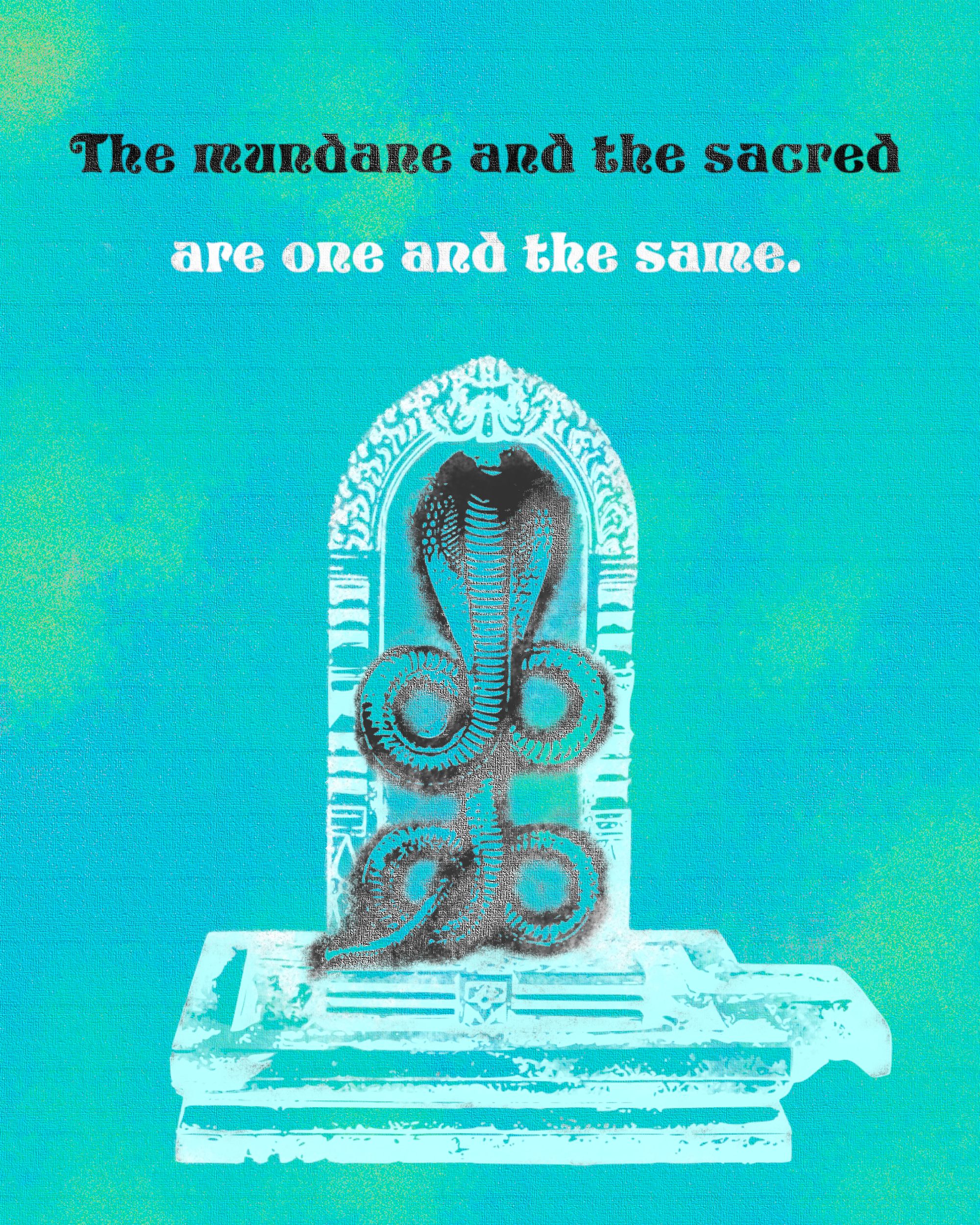All This Is Brahman
Gallery | Links:

The serpent is a powerful symbol in Hinduism, representing the flow of Kundalini and cosmic consciousness. Kundalini refers to the concept of a powerful, dormant energy coiled at the base of the spine in the muladhara (root) chakra. This energy is believed to be a primal force of creation, a vital life force that, when awakened, can lead to profound spiritual enlightenment and transformation. When the Kundalini energy is awakened through spiritual practices such as yoga, meditation, or pranayama (breathing exercises), it rises through the chakras along the spine. The process ends at the crown chakra, where the Atman (individual consciousness) merges with the Brahman (universal consciousness), achieving a state often described as samadhi or enlightenment. This journey is often depicted as the serpent uncoiling and ascending, representing the awakening and rising of spiritual consciousness. In this state, the individual transcends their ego and personal identity, experiencing themselves as part of the infinite, eternal cosmos. The boundaries between self and the universe dissolve.
Every aspect of the universe, whether perceived as ordinary or holy, is inherently interconnected and part of the same ultimate reality, Brahman. In fact, the greeting “Namaste” used among Hindus means “the divinity in me recognizes the divinity within you.” This sentiment highlights the recognition of a divine common denominator in every being.
Jainism explicitly emphasizes this respect for all life. Jain philosophy holds that every living being, no matter how small, has a soul (jiva) and, therefore, deserves compassion and respect. The principle of ahimsa, or non-violence, is central to Jainism and guides adherents to live in a way that minimizes harm to all living creatures.
Similarly, Sikhism preaches the concept of Ek Omkara, which suggests that all forms of life ultimately belong to the one true source. According to Sikh beliefs, the distinctions we perceive between different beings are mere illusions, or maya. This philosophy teaches that the same divine presence pervades all of existence, uniting all of creation in a singular reality.
This oneness fosters a profound sense of unity and interconnectedness, urging humanity to transcend superficial differences and cultivate compassion and empathy for all beings. It inspires individuals to treat one another, as well as the natural world, with greater kindness and respect. By embracing these teachings, we can create a more peaceful and elevated state of civilization.

